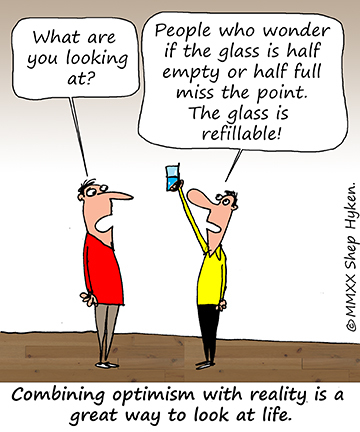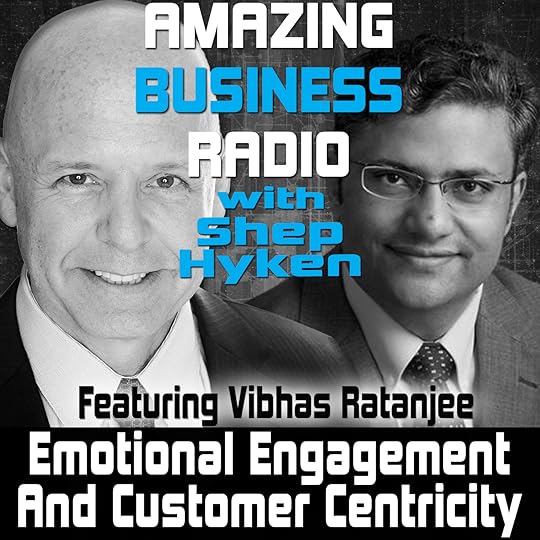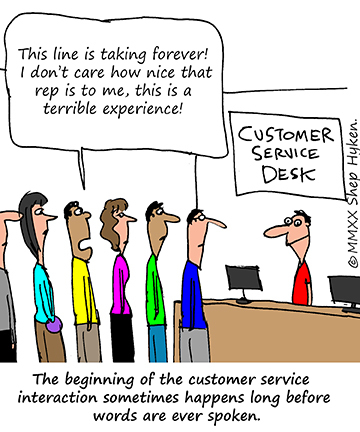Shep Hyken's Blog, page 92
January 8, 2021
Guest Post: How COVID-19 Has Impacted the Progression of Contact Centres
This week we feature an article from Gary Williams, Director of Sales and Consultancy at Spitch. He explores the impact of COVID-19 on contact centres and the consumer response during the pandemic.
Before the age of landing pages, online forms, and pop-up chatbots, contact centres were the only way we could engage with brands and services. They were the cornerstone of the service industry, and in many ways they still are. According to HubSpot, 90% of consumers argue that one channel alone is not enough in terms of customer service, instead preferring an omnichannel experience consisting of email, live chat, social media and contact centres.
Contact centres have been at the forefront of advancements in customer-facing communication technology. They were the playground for breakthrough legacy technologies such as call routing and interactive voice response (IVR), always in the interest of providing a better, more streamlined customer service model.
In 2020, that customer-centric approach is more vital than ever. As we navigate the so-called ‘new normal’ brought on by the COVID-19 pandemic, we are seeing businesses rise to the challenge and adapt in unique ways. At a time when lockdowns and social distancing are part of day-to-day life, we are all leaning on the internet and contact centres a little bit more. In some ways, the pandemic has provided an ideal lens through which to assess the relevance and effectiveness of contact centres, particularly in terms of customer satisfaction and preferences.
Keeping Customers Front of Mind
Far from being the end of contact centres, the pandemic is acting as a catalyst for an evolution that was already taking place, with many embracing artificial intelligence and natural language processing (NPL) to help reduce overheads without compromising on service and in some cases, enhancing it. The key question then becomes, do these automation technologies hurt the customer experience or enhance it and what impact, if any, has the pandemic had on people’s interactions with contact centres?
In a recent survey, we asked respondents across Europe about their interactions with contact centres since the beginning of the COVID-19 pandemic. Of those who took part, only 48% of said they would rather find answers on the internet than phone a contact centre, which is surprisingly low given we all carry the internet around in our pockets. It demonstrates a very real need for contact centres in the omnichannel mix. However, 47% of those asked said they had noticed a decrease in service and efficiency during the pandemic, with 29% finding the contact centre experience “totally disappointing.”
While the demand for contact centres is there, customers’ needs are not being met. So, where are businesses going wrong, and what can be done differently?
Make the Most of Automation
First, we need to dispel the preconception that automation is bad. In the same survey, 48% of respondents had at some point interacted with a contact centre during the COVID-19 pandemic, and almost all had a “satisfactory” experience. This was attributed primarily to the increased speed and accuracy of the service, and not needing to be placed on hold. The technology is clearly there and working, and it is becoming more available and affordable for businesses of all sizes, creating a relatively easy-win in the field of phone-based customer service. However, automation is not designed to replace contact centre staff, but rather support them. Of those respondents that used contact centres, 72% said it was “essential” to have their call transferred to a human operator when things got complicated.
What this tells us that customers are surprisingly satisfied with, and in favour of, automated contact centre technology. But by the same token, it also tells us that there is no replacement for the human touch when things get complex, and human input is likely to be needed for the foreseeable future. The mission for contact centre operators will be to get the balance between AI and human input just right, optimising their cost-efficiency without compromising on levels of service.
The contact centres of the future may look very different, but they will always be present in a customer-centric world.
Gary Williams is the Director of Sales and Consultancy at Spitch. He is an experienced Sales Director with a demonstrated history of working in the information technology and services industry. Gary is also skilled in Management, Software as a Service (SaaS), Business Development, Marketing Strategy, and Sales Process .
F
 or more articles from Shep Hyken and his guest contributors go to customerserviceblog.com.
or more articles from Shep Hyken and his guest contributors go to customerserviceblog.com.
Read Shep’s latest Forbes article: Nobody Has a Sustainable Competitive Advantage
The post Guest Post: How COVID-19 Has Impacted the Progression of Contact Centres appeared first on Shep Hyken.
January 6, 2021
Shep’s 2021 Top 10 Business Predictions
 Every year I write my customer service and customer experience (CX) predictions in my Forbes.com column.
Every year I write my customer service and customer experience (CX) predictions in my Forbes.com column.
This year, I thought I would share a brief version of them with our Shepard Letter subscribers. So, here are my Top 10 Predictions for 2021:
Customers continue to get smarter. This has led to my list of predictions for several years. Our customers keep getting smarter about customer service and experience. They tolerate fewer customer service failures and demand better because they know it’s possible.
Customers are becoming impatient. They want what they want NOW. Consider the result of the more than 1,000 consumers we surveyed for our 2020 Achieving Customer Amazement Survey. We found a whopping 96.2% of them are willing to leave because of bad customer service. That number will stay high and is more important than ever as we continue to navigate and come out of the pandemic.
The word for 2021 will be empathy. While people have embraced self-service solutions and digital selling experiences, COVID-19 saw customers who normally would be happy with the digital experience reaching out to companies just to talk to someone who cares. More than ever, empathy is at the root of a successful human-to-human interaction.
Convenience is no longer optional. This was a differentiation that helped distance companies from their competition. Now, it’s expected. For example, before the pandemic, delivery was a nice option that some businesses offered. Now it’s an expectation that businesses have scrambled to incorporate into their day-to-day experience.
Companies find more ways to automate and digitize the experience. If you want to see a prediction reveal itself in real-time, just look at what happened in the first few months of the pandemic. Companies were forced to adopt technologies that they would have used eventually, but not for three to five more years. COVID-19 pushed us into the future.
The virtual and remote workforce has become business as usual. Many companies that would have never thought it possible now embrace the remote workforce to the point of saying, “We’re shutting down our offices.” Not every company will go 100% remote, but the option is there if they want to go to that level.
Personalization at a digital level is getting more personal. As sophisticated CRMs (Customer Relationship Management systems) and AI integrate, the data that is generated will help companies create a more personalized experience. Customers enjoy feeling connected—when companies know who they are—even if it’s at a digital level. And AI will fuel this trend.
Chatbots will do more than just communicate with customers. Most companies use chatbots as a way to manage customer support. Chatbots will continue to do that, and get better at it, but they will also help decide what happens next. The initial interaction is the starting point for automating processes or escalating the issue to a human.
Companies will over-automate and over-digitize. This is as much a warning as it is a prediction. Overdoing any of the technologies puts a company at risk of becoming a commodity with little or no differentiation from its competitors. There is a gap that is getting wider for some companies. That gap is the ever-increasing, dangerous distance between the customer’s automated experience and the customer’s human-to-human experience.
Problems can be predicted. Companies will increase their ability to fix a problem before customers ever know they have one. Different sensors, alerts and alarms will trigger companies to proactively manage a customer’s experience like never before.
There are plenty of other predictions that will be made by many other experts. All of these can be used to start conversations around what’s next, what must change, and more. As you make decisions based on these and other predictions, always look to the future and anticipate the impact on your customers and employees.
Shep Hyken is a customer service expert, keynote speaker, and New York Times bestselling business author. For information, contact 314-692-2200 or www.hyken.com. For information on The Customer Focus customer service training programs, go to www.thecustomerfocus.com. Follow on Twitter: @Hyken
customer service training programs, go to www.thecustomerfocus.com. Follow on Twitter: @Hyken
(Copyright © MMXXI, Shep Hyken)
The post Shep’s 2021 Top 10 Business Predictions appeared first on Shep Hyken.
January 5, 2021
Amazing Business Radio: David Wachs

The Power of the Handwritten Note
Personalizing the Customer Experience at Scale
Shep Hyken interviews David Wachs, Founder and CEO of Handwrytten. They discuss how personalized, handwritten notes can increase customer loyalty and improve the overall customer experience.








Top Takeaways:
If you send a personalized item to your customers, whether it’s a note or other gift, don’t put your logo on it. Ask yourself, “Is this a gift or a promotional item?”
In today’s world, there is so much mass digital communication—emails, texts and more. That makes a handwritten note stand out even more.
When someone receives a handwritten note, they are more likely to keep it—and even display it. That’s the emotional impact it has.
Define a clear schedule for when you want to connect with your customers. This will give you a series of touchpoints with them throughout the year.
Staying top-of-mind for your customers helps you make your follow-up sale and can make customers come back to do business with you again and again.
There is a lot of ROI to be had from sending handwritten notes, but that can’t be your sole agenda when sending them. It will make the notes come across as insincere, which will drive customers away.
Handwritten notes are great for showing gratitude to your customers. They can also be used to ask your customers to write you a review, to remind them to schedule annual appointments or to apologize for mistakes.
If you do make a mistake with your customer, fix it and send a handwritten note as follow up. Fixing the problem the right way can increase customer loyalty and the lifetime value of the customer, more than if the mistake had never even happened!
Personalization is crucial for companies of every size. Even massive companies should feel as though they are small and personal to the customer.
Gratitude matters. Show your customers that you appreciate them! It goes a long way.
Quotes:
“People keep actual handwritten notes. When someone receives a handwritten note from somebody, not only would they read it, they might even put it on display.”
“If you screw up, fix it and then follow up with a handwritten note. Fixing mistakes the right way can make your customer more loyal than if the mistake had not happened in the first place.”
“One of the big benefits of handwritten notes is having that personal touch. To give that up is a step in the wrong direction. Regardless of the size of your company, you want to be seen as a personal company.”
About:
David Wachs is the Founder and CEO of Handwrytten, a platform for writing and sending handwritten notes at scale. He is a serial entrepreneur and frequent speaker on marketing technology. Previously, David was the Founder and President of Cellit.
Shep Hyken is a customer service and experience expert, New York Times bestselling author, award-winning keynote speaker, and your host of Amazing Business Radio.
This episode of Amazing Business Radio with Shep Hyken answers the following questions … and more:
How can I personalize my customer experience?
What is the power of the handwritten note?
How can I show appreciation to my customers?
How can I recover from mistakes?
Why is personalization important in the customer experience?
The post Amazing Business Radio: David Wachs appeared first on Shep Hyken.
January 4, 2021
5 Top Customer Service Articles For the Week of January 4, 2021
Each week I read a number of customer service and customer experience articles from various resources. Here are my top five picks from last week. I have added my comment about each article and would like to hear what you think too.
Customer Experience Tips and Advice from the Pros During Disruption by Srijana Angdembey
(Oracle) An engaging customer experience (CX) was once only nice to have, but during periods of uncertainly, it becomes a must have to provide the advice and solutions your customers need and build customer loyalty.
My Comment: This is the perfect “Happy New Year” article. 2020 was a year of disruption, but some saw also saw it as a year of acceleration. Our friends at Oracle CX Marketing asked six experts (myself included) how to create a better customer experience in times of disruption. These ideas are brilliant!
How to design your business to deliver better customer outcomes by Vala Afshar
(ZDNet) To successfully compete in the next normal, companies must develop a new strategic playbook for improving the stakeholder experience and business growth opportunities.
My Comment: Another article from Vala Afshar makes this list. This time he includes eight questions to ask yourself that will help your organization grow. The focus is on customer outcomes. These questions will make you think. Choose one to focus on – or all eight if appropriate!
15 Effective Techniques For Retaining Customers by Expert Panel®
(Forbes) 5 members from Forbes Business Council look at some practical ways that companies can retain their customers during an economic recession.
My Comment: The Forbes Business Council has assembled fifteen ideas from fifteen members that will help you keep your customers coming back. It’s a quick read, and all you have to do is get one idea (but I know you’ll get more) to make the next few minutes a worthwhile investment of your time.
6 Ways to Boost CX in 2021 by Phil Britt
(Smarter CX) With the new year just days away, it’s a good time to consider the best ways to boost customer experience in 2021. We interviewed four experts for this article, and here’s what they had to say about improving CX in the new year and beyond.
My Comment: Another list! (I love lists!) My favorite is number two, which is how a small change, while it may seem insignificant, can actually be big. To put it in baseball terms, you don’t have to hit a home run every time you get up to bat. Small is sometimes great.
The changing tide of retail CX by Carlos Zapatero
(Retail Customer Experience) Carlos Zapatero, a business development executive at SYKES, explains how the events of 2020 accelerated a shift in retail customer experience to become more flexible and consistent — and may be the new standard well past the pandemic.
My Comment: The retail world has changed forever. This article showcases some of the trends that are important to retail CX as we come out of the pandemic. The future is filled with opportunity for the retailer that can understand their customers’ new expectations.
BONUS
Learn Everything You Need to Know About CX From ’80s Music by Jim Tincher
(Heart of the Customer) During the pandemic, I’ve been listening even more, and it occurred to me one day recently that the music of that era informed my views about customer experience early on.
My Comment: I’m a musician. I play my guitar(s) almost every night. This article popped up in my feed and made me smile. If you love music, you’ll enjoy this fun article. The author has taken the titles of many of our favorite 80’s songs and worked them into this entertaining post. Rock on!
 Shep Hyken is a customer service expert, professional speaker and New York Times bestselling business author. For information on The Customer Focus
Shep Hyken is a customer service expert, professional speaker and New York Times bestselling business author. For information on The Customer Focus customer service training programs go to www.TheCustomerFocus.com. Follow on Twitter: @Hyken
customer service training programs go to www.TheCustomerFocus.com. Follow on Twitter: @Hyken
The post 5 Top Customer Service Articles For the Week of January 4, 2021 appeared first on Shep Hyken.
January 1, 2021
Guest Post: How to Nail Automated Customer Service Email Writing
This week we feature an article from Jessica Fender, head of the content team at Alltopreviews.com. She provides tips and examples of how to improve the customer experience with automated support emails.
Email automation is a way to keep your customers happy. With automation, you improve the quality of communication and keep customers updated in a timely manner. This saves time and helps to reduce support team workload.
Sounds like everybody should use automation, right? Not exactly. Many businesses aren’t doing a great job with that. The emails for customers are often unclear and sound super generic and impersonal. This is not a good way to do business. Especially at times when personalized customer experience-focused companies win.
That’s why improving communication in automated support emails is a big opportunity. In this post, you’ll find tips on how to write personalized, positive, clear, and unique emails your customers will love.
Problem with Automated Emails for Customer Support
“Email automation” means using a special tool to store and send emails automatically. This strategy is common in eCommerce and can greatly speed up customer service operations.
By having an email tool send messages to customers, you can:
Save tons of time. No need to write emails every time and send them – the tool saves templates and sends them at predefined times or triggers.
Increase support team effectiveness. Have your team focused on more complex cases while the automation takes care of repetitive, simple processes.
Improve the customer experience. Customer experience is the best marketing; thanks to better support, your business can get more positive reviews and recommendations.
The process is very simple: you pre-write emails and set up the tool to share them in specific situations, e.g., a customer submits a new support request via email.
But there’s a small problem.
Companies make the mistake of writing very impersonal and generic emails. That’s like adding the same generic product description when you create product pages: people will notice them everywhere. They won’t like that because they want a personalized experience.
Here’s an example of a typical generic email.
“Dear customer,
Your support request #438975 has been received. We will try to respond as soon as possible.
If you require a response, please resend your message in 3 days.
Best Regards,”
Doesn’t sound so great, right? Just another message for which email automation gets a bad rap. Besides, such emails have absolutely nothing to do with promoting a positive and unique brand experience.
Find tips to fix that in the next section.
Related: How to Create a Very Personalized Customer Experience.
How to Write Automated Customer Support Emails
Here’s how to write emails that sound personal and don’t come across as cold.
1. Write in a Natural and Positive Language
A major reason why automated emails get a bad rap is generic, boring writing. The best way to fix that is to make your emails more engaging by combining natural and positive languages.
How to do that, exactly? Well, imagine having a real conversation with your customer. The way you’d speak with them should closely resemble this style.
Here’s an example. Let’s use the generic email and improve it.

Which one do you find better? The one on the right is surely easier to read and brings some positivity to the conversation, compared to the “generic” one.
Should your support team need some training with writing emails better, Ratedbystudents is a place where people rate online writing help services, so you can find writing and editing professionals to help you with this.
Pro tip: Assign a special person in your support team to write and update email templates. This will ensure the consistency of language style and accuracy.
2. Shorten the Copy
“But we need to be specific and clear. Cutting the length means sacrificing clarity!”
This was a response of a customer support team leader from an academic writing services company when asked to shorten email texts. Have the same doubts? Keep reading.
Cutting the text doesn’t necessarily mean clarity. Here’s a great example (and some proof that almost every auto email you have should be shortened).
A typical lengthy email:
“In order to access your account, please go to our home page www.example.com. Click the “Log in” button in the top right corner of the page. You will be redirected to the login page www.example.com/login once you click.”
Here’s how you can shorten it:
“To log in to your account, please visit www.example.com/login.”
Just like that, three lines became one! This is a much more customer-friendly response – it’s clear, simple, and summarizes the first version.
3. Use a Name and Signature
Using the name of a real person from customer support is a great practice to make emails more natural. Treat every customer support ticket like a conversation.
Even though they’re automatic emails, staying anonymous is not a good idea. People connect with other people, not companies.
Also, add the email signature. It might include a person’s name, email, and other contact data that a customer might use in the future. By doing so, you’re demonstrating empathy and readiness to go the extra mile to make customers happy.
Related: Empathy – What Your Customer Service Strategy is Missing
Over to You
If you want to improve your customer experience, start changing the way you write automated customer support emails. Generic, impersonal, and wordy emails are becoming a thing of the past. Avoid them with these tips and you’ll make a big step toward better relationships with your customers!
Jessica Fender is a professional writer with a background in marketing. Currently, Jessica is leading the content team at Alltopreviews.com , an educational website for students. Her aim is to improve user experience by sharing guides and reviews that make learning fun and easy.
F
 or more articles from Shep Hyken and his guest contributors go to customerserviceblog.com.
or more articles from Shep Hyken and his guest contributors go to customerserviceblog.com.
Read Shep’s latest Forbes article: The Business Word of the Year
The post Guest Post: How to Nail Automated Customer Service Email Writing appeared first on Shep Hyken.
December 30, 2020
A Realistically Optimistic 2021
 As we close out the year, I thought I’d break from the traditional customer service and experience topics and get a little personal – maybe even a little motivational.
As we close out the year, I thought I’d break from the traditional customer service and experience topics and get a little personal – maybe even a little motivational.
I’m very optimistic about the future. But the word very doesn’t mean I’m overly optimistic. There’s a difference. Put another way, when I’m asked if the glass is half empty or half full, my response is, “Yes.” Maybe that seems like a bit of a rude answer, but here is the point. It is half full, and even though I’m very optimistic, it doesn’t mean I’m unrealistically optimistic. No, I’m realistically optimistic.
Since March, when the COVID-19 pandemic hit the U.S., I hoped it would be over in a few months. That life would be back to normal by the fall. I was wrong, but that’s not the point. Not knowing if I would be right, I planned my business in case it didn’t work out the way I wanted it to. As we moved into summer, my projection for normalcy moved to early 2021. Now, I’m thinking it will be late 2021. I continue to plan and adjust accordingly.
This way of thinking reminded me of Jim Collins’ book, Good to Great. He wrote about something he called “The Stockdale Paradox.” Admiral James Stockdale, who was awarded the Medal of Honor in the Vietnam War, during which he was held captive for seven years and tortured more than 20 times, was asked how he was able to endure the captivity. Stockdale said, “I never lost faith in the end of the story. I never doubted, not only, that I would get out, but also that I would prevail in the end and turn the experience into the defining event of my life, which in retrospect I would not trade.”
That sure sounds optimistic to me, but consider this. Stockdale went on to say why some of the other prisoners didn’t survive. He described them as optimists. They thought they would be out by Christmas. Christmas would come and go, as did Easter, Thanksgiving, and then Christmas again. According to Stockdale, they died of broken hearts.
The Stockdale paradox is about being able to accept your current situation while having faith that you will prevail. In Stockdale’s words: “You must never confuse faith that you will prevail in the end (which you can never afford to lose) with the discipline to confront the most brutal facts of your current reality, whatever that might be.”
For many, our metaphoric captivity this year has been COVID-19 and how it is impacting our jobs, our finances, our relationships and more. A popular saying is, “This too shall pass”; however, that is akin to sweeping a problem under the carpet, pretending it’s not there, and hoping it will go away because it’s out of sight. I don’t like this way of thinking. Instead, I choose to practice realistic optimism, accepting the facts while still having faith in the future.
So, here’s to a realistically optimistic 2021. May this be your best year ever, and each year thereafter be even better than the last!
Shep Hyken is a customer service expert, keynote speaker, and New York Times bestselling business author. For information, contact 314-692-2200 or www.hyken.com. For information on The Customer Focus customer service training programs, go to www.thecustomerfocus.com. Follow on Twitter: @Hyken
customer service training programs, go to www.thecustomerfocus.com. Follow on Twitter: @Hyken
(Copyright © MMXX, Shep Hyken)
The post A Realistically Optimistic 2021 appeared first on Shep Hyken.
December 29, 2020
Amazing Business Radio: Vibhas Ratanjee

Emotional Engagement and Customer Centricity
How to Drive Customer and Employee Engagement for a Better Customer Experience
Shep Hyken interviews Vibhas Ratanjee, Senior Practice Expert with Gallup. They discuss strategies for building customer centricity and emotional engagement.








Top Takeaways:
Customer centricity happens when everyone in the organization is focused on customer engagement. That engagement is more than just satisfaction—it’s about an emotional connection with your customers.
There are three components involved in getting everyone in an organization aligned: leadership, culture and talent.
In order for leaders to be truly customer-centric, they must be immersed in the customer experience. That means spending time on the frontlines of customer service.
Give your customers a voice in your company. Actively involve them in problem-solving and give them a seat at the table.
Leaders must model the company culture they wish to see.
Customer centricity must be part of an organization’s values. These values must be visible to all employees and felt by customers. Define the behaviors you wish to see and empower those frontline employees to deliver on those values.
Even internal employees who may never directly interact with customers still have an impact on the customer experience. Every employee must recognize their place in the customer journey.
Emotional engagement is driven by three metrics: pride, passion and confidence.
Engaged employees lead to engaged customers. Fully engaged employees and customers translate into greater profit and success for your company.
Service values are similar to core values. They define standards of service on how to delight customers and should ignite and inspire employees, not stifle their initiative.
Recognize the difference between skill, talent and knowledge. Skill can be transferred, knowledge can be learned, but talent is innate. Part of hiring right is finding that talent.
Much of driving customer-centricity boils down to measurement. Measurement alone isn’t enough, though—you must use what you learn to improve the process and drive a better customer experience.
Quotes:
“A customer-centric culture is one where everyone is engaged in creating engagement for our customer. That engagement is emotional engagement, not just satisfaction or loyalty.”
“Even if you’re behind the scenes, you need to know how you, directly and indirectly, impact the customer experience and customer engagement.”
“Emotional engagement of employees and customers pays off in terms of tremendous financial value in the long term.”
“A lot of the effort around driving customer-centricity boils down to measurement. It’s what you do with that—how you translate it to the front lines and use it to inspire and engage.”
About:
Vibhas Ratanjee is a Senior Practice Expert with Gallup who specializes in organizational development, culture change and executive-level engagement strategies. Vibhas is an executive coach and a leadership consultant to senior executives and CEOs, as well as a well-known speaker and author.
Shep Hyken is a customer service and experience expert, New York Times bestselling author, award-winning keynote speaker, and your host of Amazing Business Radio.
This episode of Amazing Business Radio with Shep Hyken answers the following questions … and more:
What does it mean to be customer-centric?
How can I build a customer-centric culture?
How can I drive customer and employee engagement?
What are service values and core values?
How can I hire the best people for customer-facing roles?
The post Amazing Business Radio: Vibhas Ratanjee appeared first on Shep Hyken.
December 28, 2020
5 Top Customer Service Articles For the Week of December 28, 2020
Each week I read a number of customer service and customer experience articles from various resources. Here are my top five picks from last week. I have added my comment about each article and would like to hear what you think too.
Gift Experiences Can Create an Emotional Connection With Customers by Wise Marketer Staff
(The Wise Marketer) The psychological impact of gifting, when created and delivered with specific design, has a powerful impact on customer behavior. In contrast to a loyalty program, gifting is a cost effective way to achieve tangible and significant results.
My Comment: Happy Holidays! We are just heading out of the gifting season, but it’s not too late to understand the impact a gift to a customer can make. This is an interesting article on how a gift can create a psychological impact, increase loyalty and more. The author also shares a few ideas on a gifting reward strategy.
Mastercard: Consumer Experience Is Loyalty’s New Currency by PYMNTS
(PYMNTS) “I’m a consumer. Why should I keep coming back to you?” The question comes from Mastercard’s Loyalty and Engagement President Francis Hondal as she addressed the changes brought to consumers as a result of the pandemic and changes that need to be made in loyalty programs designed to attract them.
My Comment: Here is a fascinating article about loyalty and the customer experience. The article starts with the question: “I’m a consumer. Why should I keep coming back to you?” It turns out that loyalty programs that give you points for your business may be taking a second seat to the customer experience. I’ve always posed the question to my clients with loyalty programs, “If you took away the points and perks, would the customer still want to do business with you?”
Excellent Customer Service? It Starts at the Top! by By Brenda Fields
(Hotel Executive) This article will address what great customer service is from the guest perspective and the value of general managers setting the standards.
My Comment: Let’s take a lesson from the hospitality industry. While the article’s title mentions that excellent customer service starts at the top, this article is actually more of how to deliver that experience from the hotel’s perspective. The four points the author makes are appropriate for any business from every industry.
Predictions: 10 Customer experience trends for 2021 by Rosalyn Page
(CMO) CMO asks the experts about the customer experience trends heading towards marketers and CX professionals in 2021
My Comment: This is the time of year for predictions, and this article has ten of them. CMO (the publication) asked ten experts about the trends they see heading into the new year. The first one was predicted a number of years ago, and is even more relevant today than the first time someone predicted it. I’ll modify it just a bit: CX has been, is and will continue to be the new competitive advantage. And there are nine more after that!
20 important statistics about the B2B customer experience by Mark Bowen
(Intelligent CIO) Customer service has always been important for B2B sellers, but the demands of B2B buyers have shifted in line with what they have come to expect from their experience as consumers. Corbin Murakami, Sr. Product Manager of Commerce at Liferay, tells us why an excellent customer experience is the key to B2B success.
My Comment: Here are 20 stats and facts to get you thinking about customer experience in the B2B world. So many stats are based on consumer feedback. It is refreshing to get the B2B perspective.
BONUS
200 CX Thought Leaders to follow to kickstart 2021 by Engati Team
(Engati) Meet our 200 luminaries who have taken these worlds by storm and have created a community like no other.
My Comment: I was surprised and humbled to find myself on this recent list of 200 CX thought leaders. It’s one thing to make the list, and another to be at the top. And, to be associated with so many other great experts and thought leaders. Thank you Engati CX for this honor!
 Shep Hyken is a customer service expert, professional speaker and New York Times bestselling business author. For information on The Customer Focus
Shep Hyken is a customer service expert, professional speaker and New York Times bestselling business author. For information on The Customer Focus customer service training programs go to www.TheCustomerFocus.com. Follow on Twitter: @Hyken
customer service training programs go to www.TheCustomerFocus.com. Follow on Twitter: @Hyken
The post 5 Top Customer Service Articles For the Week of December 28, 2020 appeared first on Shep Hyken.
December 25, 2020
Guest Post: Customized Customer Solutions–How can Customer Solutions be Custom Built to Your Customer’s Needs?
This week we feature an article from Pratik Salia, product manager at Knowmax. He talks about how the COVID-19 pandemic changed the customer experience and how business leaders responded.
In a world where we are spoilt for choice, a custom made option is the only right option. From customized automobiles to personalized phones to technology that adapts itself according to our choices, personalization seems to be the name of the game. In the world of customer service where customer loyalty is precious cargo and customer satisfaction is the raison d’etre, customized solutions are slowly but surely carving their spot in an arena where greater specificity, wider choice, and record speed spell out the mantra to greater success. Customer service executives across the globe agree that customizable solutions are truly the future.
So why is customization so difficult to incorporate? Different companies quote different reasons but two stand out as the most frequent causes. First, customization can be expensive. Investing in new technology can require large amounts of capital and may not yield proportionate return on investments. Second, knowledge is not distributed amenably to offer personalized choices and custom made solutions.
We considered these problems and built the following three-pronged strategy to build a customizable experience for your customers.
1. Be Smart with Your Smart Technology
As a company investing in newer customer services, ensure that you are investing in the right places. Often, this involves digging deep into your customers’ chief concerns and seeing how you can address them better. Does your platform contain all the knowledge required to customize client services? Is all this knowledge easily accessible to customer service executives? Is your knowledge base platform helping your executives and customers find more personalized solutions? Will investing in new technology enhance the customer experience? The answers to some of these questions may require weeks of rigorous questioning.
However, all that effort is seldom in vain. Answering these questions lets you know where you should be investing in the customer service supply chain and ensures that you get greater value off your knowledge base software.
2. A Customer in Need is a Friend Indeed
Often customizable solutions involve adding a personalized touch to what is otherwise a mundane process mandated by necessity. The smallest steps can go a long way in creating a better environment, leading to greater customer satisfaction. The golden rule here is that the customer is a friend. From greeting a customer by their name to asking how their day was, to ensuring that they understand solutions every step of the way, to listen to everything they have to say, a customer executive needs to be the model of a confidant for a more customized experience.
In the words of Lola Barbier, “This may sound silly, but it makes good sense. Using the customer’s name in conversation will show that you’re invested in their situation as an individual.” Individualized interactions often lead to greater customer loyalty and satisfaction.
3. Let Your Visuals do the Talking
A famous ancient Chinese quote reads, “The ear’s hearing something is not as good as the eye’s seeing it,” and this applies perfectly to customer services. Presenting a solution in terms of visuals, in addition to improving comprehensibility, provides a ready layout for incorporating greater choice and a larger number of readily customizable solutions. Enabling visual solutions on your company website also helps in enabling customer self-service and cutting down call center costs. For example, including solutions in graphic modules like decision trees provides choice at every step of the problem-solving process, and provides instantaneous personalized solutions to customers.
In addition, the same module can be customized to solve a vast range of queries- a truly customizable solution for a customizable client service experience!
While these solutions prove to be effective in improving the customer experience, the true key to creating greater choice for the customer lies in effective curation, distribution, and management of knowledge among the various service channels. This involves various short term goals like updating the knowledge base, creating more accessible content, and upgrading technology to effectively manage customer needs, as well as long term goals like building an interconnected network of customer solutions and creating effective training resources for executives. Fulfilling these short term and long term goals in tandem with each other will pave the way for a personalized and more effective customer experience.
Pratik Salia has headed CX function for a Google-backed startup. He currently manages product at Knowmax, developed in enterprises access 30+ countries in industries such as telecom, banking, e-commerce, and more.
F
 or more articles from Shep Hyken and his guest contributors go to customerserviceblog.com.
or more articles from Shep Hyken and his guest contributors go to customerserviceblog.com.
Read Shep’s latest Forbes article: Reviews Count – Give Your Customers Something to Talk About!
The post Guest Post: Customized Customer Solutions–How can Customer Solutions be Custom Built to Your Customer’s Needs? appeared first on Shep Hyken.
December 23, 2020
The Customer Service Experience Doesn’t Begin with the Greeting
 In the world of show business and live entertainment, every act has an “opening.”
In the world of show business and live entertainment, every act has an “opening.”
Most people think it’s the first words that come out of the actors’ mouths, but it’s more than that. It’s the moment the audience sees the actors walking onto the stage. It’s how they are dressed, how they make eye contact with the audience, the anticipation they create, and more. So, when the actors speak their opening lines, it is actually the end of the opening.
It’s the same in business. You call the customer service hotline. A pleasant customer support agent picks up the phone and enthusiastically greets you, ready to help resolve your problem or answer your question. This is who you want taking care of you. Isn’t that the way it should always be?
But that’s not the opening. Consider this. The friendly voice comes on after you, the customer, may have already spent 30 minutes holding. The hold time consists of music interrupted by the occasional recording that claims, “Your call is very important to us. Due to heavy call volume, you may experience longer than usual wait times. The next available agent will be with you shortly.”
Now, how long is “shortly?” Two minutes? Five minutes? Or fifty-five minutes?
So, this isn’t to complain as much as to make you aware. The friendly greeting to the customer comes after the customer has experienced a problem. That problem may have just happened, or maybe it happened a week ago and the customer is finally able to find time to call about it.
For the sake of simplicity, let’s say the problem just happened and the customer immediately phones the company. Still, the friendly greeting from your amazing people comes after whatever you put in front of the live interaction. That could be a brief intro leading to an almost immediate connection with the employee. Or, it could come after a series of menu prompts and hold time. I think we know which scenario our customers would prefer … give the customer a fast and quick way to the agent – with as little friction as possible!
Here’s the short version of this lesson. When customers have problems or questions, connect them with your amazing employees as quickly as possible, with little or no friction. The employee’s opening lines, similar to a stage performer, are not the opening. They are the end of the opening and the beginning of their “show.”
Shep Hyken is a customer service expert, keynote speaker, and New York Times bestselling business author. For information, contact 314-692-2200 or www.hyken.com. For information on The Customer Focus customer service training programs, go to www.thecustomerfocus.com. Follow on Twitter: @Hyken
customer service training programs, go to www.thecustomerfocus.com. Follow on Twitter: @Hyken
(Copyright © MMXX, Shep Hyken)
The post The Customer Service Experience Doesn’t Begin with the Greeting appeared first on Shep Hyken.





